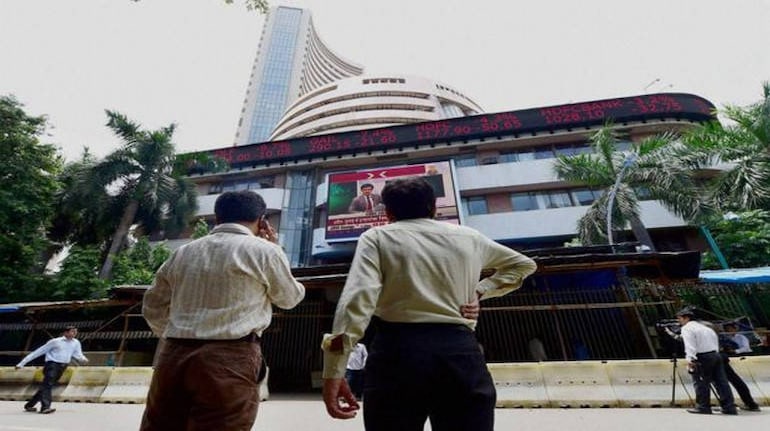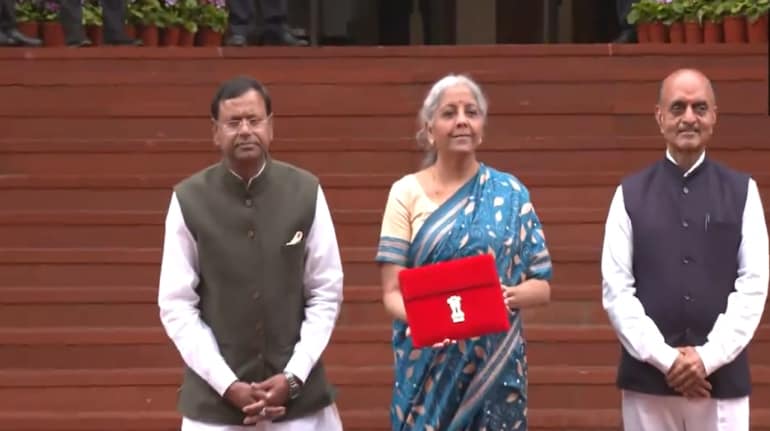
The market gained 2 percent amid low volumes in the New Year holiday week as investors and traders closely followed the Omicron situation.
The bulls gained more strength in the week ended December 31. Value buying and a bit of short-covering boosted sentiment, pushing the benchmark indices 4 percent higher from December 20 lows.
All the sectors participated in the run, with pharma emerging as the prominent gainer, rising 5.4 percent followed by auto, banking & financial and FMCG indices.
The broader markets, too, joined the rally and outperformed frontline indices, as the Nifty Midcap 100 and Smallcap 100 indices gained 2.8 percent and 4.05 percent.
The BSE Sensex settled at 58,254, up 1,130 points, and the Nifty climbed 350 points to 17,354 during the week.
On January 3, the market will first react to December GST collection, which remained above Rs 1 lakh crore mark for the sixth consecutive month at Rs 1.29 lakh crore.
The market is expected to remain rangebound, with a positive bias amid a lack of global cues and low volumes and will keep an eye on domestic cues, including PMI data and the Covid cases, experts say.
"Though the markets have been witnessing recovery for the last two weeks, it's too early to say that we are out of woods. The recent rise in COVID cases has prompted a few key states to announce restrictions and that may extend if the situation deteriorates further," said Ajit Mishra, VP-Research, Religare Broking.
He said participants should maintain a cautious stance and adopt a hedged approach.
In the midst of volatility, investors should focus on the long-term picture rather than the short-term headwinds and position their portfolio accordingly, said Yesha Shah of Samco Securities.
Here are 10 key factors that will keep traders busy during the week:
The recent spike in Covid cases caused correction and volatility in the markets. On January 1, India reported 22,775 Covid cases, the highest daily addition since October 2. Of these, 1,540 infections were caused by the more infectious Omicron variant.
With the rising cases, the Centre has extended Covid-related restriction to January 31. Several states, including Maharashtra, Delhi, Tamil Nadu, and Haryana, too, have imposed curbs to check the spread of the virus.
The market will keep a close watch on Covid cases and fresh restrictions. If these go up significantly, it may keep the market under pressure volatile, experts said.
Globally, too, daily cases are spiking in several countries including the US, Brazil, the UK, France, Spain, Italy, Argentina, and Canada.
Auto stocks
Auto stocks will be on focus on January 3, as they will react to monthly sales data released over the weekend. The data, so far, has indicated that the chip shortage is gradually easing.
Escorts saw a 39 percent dip in tractors sales YoY in December, while Mahindra & Mahindra also witnessed a 19 percent YoY decline in monthly sales but there was increase in its commercial vehicle and passenger vehicle sales.
Eicher Motors reported a 25.8 percent YoY growth in commercial vehicle segment and its Royal Enfield sales increased 7 percent YoY.
Tata Motors clocked a 24 percent YoY growth in domestic sales for December.
The country's largest carmaker Maruti Suzuki witnessed a 4.4 percent YoY decline in sales, largely due to weak domestic growth but reported its highest-ever monthly exports of 22,280 units in December.
"The shortage of electronic components had a minor impact on the production of vehicles during the month. The shortage primarily affected the production of vehicles sold in domestic market. The company took all possible measures to minimise the impact," Maruti said in its BSE filing.
Economic data points
The street will closely watch Markit Manufacturing PMI numbers for December on January 3, while Markit Composite PMI and Services PMI data for December will be released two days later.
India's Manufacturing PMI recorded a growth for the fifth consecutive month in November at 57.6 against 55.9 in October.
Services PMI dropped a bit to 58.1 in November against 58.4 in October but remained above street expectations, indicating expansion in the sector.
Foreign exchange reserves for the week ended will be released on January 31.
Foreign institutional investors (FII) remained net sellers, though the pace of selling slowed, possibly due to New Year holiday season globally. They net sold Rs 2,217 crore worth of shares in the last week of 2021, taking December selling to Rs 35,494 crore, the second highest during the year after November.
Domestic institutional investors (DII) continued to support the market, buying Rs 4,273 crore worth of shares during the week. Total buying in December stood at Rs 31,231 crore, the highest monthly buying in 2021.
In 2021, FIIs' net sold equities worth Rs 91,600 crore, however, DIIs made Rs 94,800 crore worth of buying. The street will closely monitor the behaviour of institutional investors, given the expected events like the Union Budget, assembly elections, Omicron and updates on rate hikes.
FOMC minutes
Globally investors will also look for cues in the FOMC minutes of the December meeting to be released on January 6.
"Indian markets may move in tandem with global markets as investors try to read between the lines of the Fed's action plan," said Shah of Samco Securities.
In the December meeting, the Federal Reserve said the pandemic-era bond purchases will end in March 2022, hinting at three rate hikes during the year given the concerns over inflation. The American central bank will also take a note of rising Omicron risk and its impact on the economy.
Technical View
Technically, the Nifty showed strength, forming bullish candles on the daily and weekly charts as it gained 0.87 percent on December 31 and 2 percent during the week, indicating more upside in the short term.
Experts see 17,400-17,500 as a critical resistance zone for the index in the near term followed by 17,640, which if surpassed could end the bearish setup. They said 17,150, the 20-day moving average, will act as a strong support.
"A log bull candle was formed on the daily chart, which indicates an upside breakout of the hurdle of down sloping trend line (connected lower highs) at 17,250 levels. This is a positive indication and one may expect more upside in the short term," said Nagaraj Shetti, Technical Research Analyst at HDFC Securities.
The short term trend for the Nifty continued to be positive. "And one may expect further upside in the short term. A sustainable move above 17,640 is likely to negate the bearish setup and that could open more upside as per daily and weekly timeframe chart. Immediate support is placed at 17,260 levels," he said.
F&O cues
At the start of the January series, maximum Call open interest was seen at 18,000 strike, followed by 17,500 and 17,700 strikes. Call writing was seen at 18,000 strike followed by 17,700 and 17,800 strikes, with Call unwinding at 17,200, 17,100 and 17,000 strikes.
The maximum Put open interest was seen at 17,300 strike followed by 17,200 and 17,000 strikes. Put writing was seen at 17,300 strike then 17,100 and 17,000 strikes.
The weekly options data indicates that the Nifty can trade in 17,000-17,700 in the near term, while the stability in volatility could cap the downside in the market, experts said.
"The Nifty holds highest Put concentration at 17,200 strike for the coming weekly settlement. while no major Call base is visible with highest Call concentration placed at the 17,400 strike. Hence, positive bias can be maintained till the Nifty holds above 17,200 for upside targets of 17,500-17,600. Move below 17,200 may put the Nifty in the consolidation mode once again," ICICI Direct said.
The brokerage said the January series started with relatively low open interest with the Nifty January series open interest (OI) close to just 1 crore shares.
"Till we do not see fresh accumulation in OI, major directional move seems unlikely. Moreover, considering the lack of activities from FIIs last week, we need to watch if their selling spree continues in January as well," it said.
On the volatility front, India VIX remained low near 16 levels, closing at 16.22 against 16.14 on week-on-week basis.
"While we expect volatility to remain higher ahead of upcoming result season, move below 16 may provide fresh upside bias for equities," ICICI Direct said.
The Bank Nifty turned strong during the week, ending 1.79 percent higher at 35,481.70, providing good support to the.
The index formed a bullish candle on the daily as well as weekly charts, indicating positive bias in the near term. Experts said if the strength continues, it can push the Nifty above 17,500 again.
"It formed a bullish candle on the daily scale and negated its lower lows of the last two weeks. Now it has to hold above 35,500 levels for it to move up towards 36,000, whereas support can be seen at 35,250 and 35,000 levels," said Chandan Taparia of Motilal Oswal.
On the option front, maximum Call open interest in the Bank Nifty was seen at 36,000 strike followed by 35,500 and 35,800 strikes.
Call writing was seen at 35,500 strike followed by 36,300 and 35,700 strikes, with Call unwinding at 35,000, 35,200 and 35,300 strikes.
The maximum Put open interest was seen at 35,000 strike followed by 35,500 and 35,200 strikes. Put writing was seen at 35,500 strike then 35,000 and 35,300 strikes.
"We feel the index is well placed to test 37,000 on upsides once it manages to close above 36,000. In contrast, in case of selling or consolidation, we feel the recent low of 35,000 remains a strong support zone," said ICICI Direct.
Corporate Action
Here are key corporate actions taking place in the coming week:

Global Cues
Here are key global data points to watch out for next week:

Dalal Street Week Ahead | 10 key factors that will keep traders busy next week - Moneycontrol.com
Read More

No comments:
Post a Comment